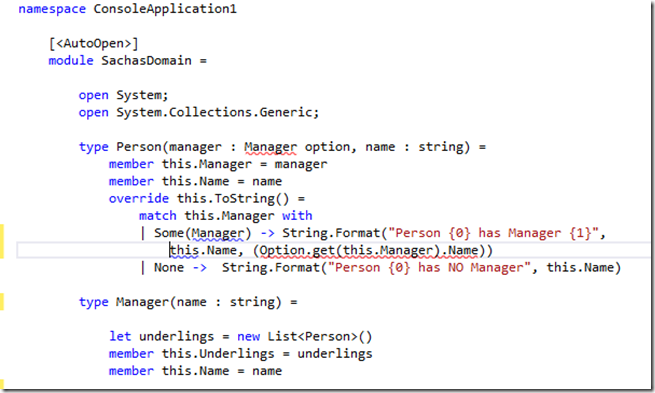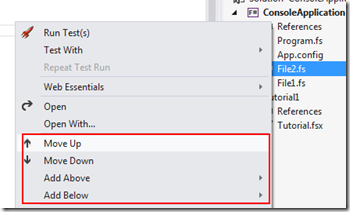Here is the same thing with a C record and viewed in dnSpy. When you navigate Visual Studio generates a complete F Signature File that represents the module or namespace that the symbol lives under with XML documentation if it is present.

F 15 Code Organization Modules Files Types Sacha S Blog
Namespaces can span multiple files modules etc cant.

F# module vs type. The command sends the module to the Format-List cmdlet to display all properties and values of the module object. This applies to the language design library and tooling. The Map and Set modules have some of them as well but I wont be discussing map and set here.
Firstly as an annotation to a value that allows certain checks to be made especially at compile time. In the context of F you can think of types as being used in two main ways. The F module Microsoft.
One example of this in the F libraries is the function that calculates a lists length. In this case you cant define a type extension so the issue is moot - you must use an extension of the Array module. Take some time to compare C records to F records.
The F CSV Type Provider is built on top of an efficient CSV parser written in F. The main aim of the competition was. The Result type is typically used in monadic error-handling which is often referred to as Railway-oriented Programming within the F community.
It is available as a standalone function in the List module but also as a method on a list instance. A major goal of long-term language evolution is to remove corner-cases in the language that surprise users or are unnecessary hurdles on the path to adoption. When working with well-defined CSV documents it is easier to use the type provider but in a more dynamic scenario or when writing quick and simple scripts the parser might be a simpler option.
The reason that you cant define a type extension is that in F type extensions must exactly mirror type definitions so you can define a type extension on the generic a list type for instance but not on the constructed type string list. The full name of every value function or type in. See the Result module for the built-in combinators for the Result.
However in functional-style F a data structure and the functions that act on it are combined in a module instead. Click on the image to see all the code. CSV Parser and Reader.
Having the type declared separately from the functions. The following trivial example demonstrates this approach. For the function signatures I will use list as the standard collection type.
In the following example we start with a type. You can use it with any type. For example you can have an option of a complex type like Person or a tuple type like intint or a function type like int-bool or even an option of an option type.
This allows colorization tooltips and further navigation to work. In other words types allow you to have compile time unit tests. Let list 110 functional style let len1 Listlength list OO style let len2 listLength.
That is a type is a sort of data modeling tool. Note that the result type is a struct discriminated union. This is what the F Point record type looks like when opened in dnSpy and converted to C.
F 6 is about making F simpler and more performant. The F option is a true first class type its just a normal union type after all. Click on the image to see all the code.
In F a single file can contain multiple namespaces which in turn can contain multiple Modules which then can contain values functions and types. As shown in the video you can either use the f12 key or ctrlclick to navigate to a declaration just like in source code in your own solution. A script_method it must be marked constant by adding the name of the attribute to the __constants__ list for the type.
The signatures for the seq and array versions will be similar. Second as domains for functions to act upon. There are two common patterns for mixing types and functions together.
Many of these functions are not yet documented on MSDN so Im going to link. Use NET Interactive Notebooks in Jupyter or VS Code. Structural equality semantics apply here.
Linear layer_sizes -1 num_classes self. Click on these images to see all the code. All functions are available for list seq and array in F v4 unless noted.
Theres also a simple API that can be used to access values dynamically.

F 15 Code Organization Modules Files Types Sacha S Blog

F Application And Module Basics Abhishek Shukla

F 15 Code Organization Modules Files Types Sacha S Blog